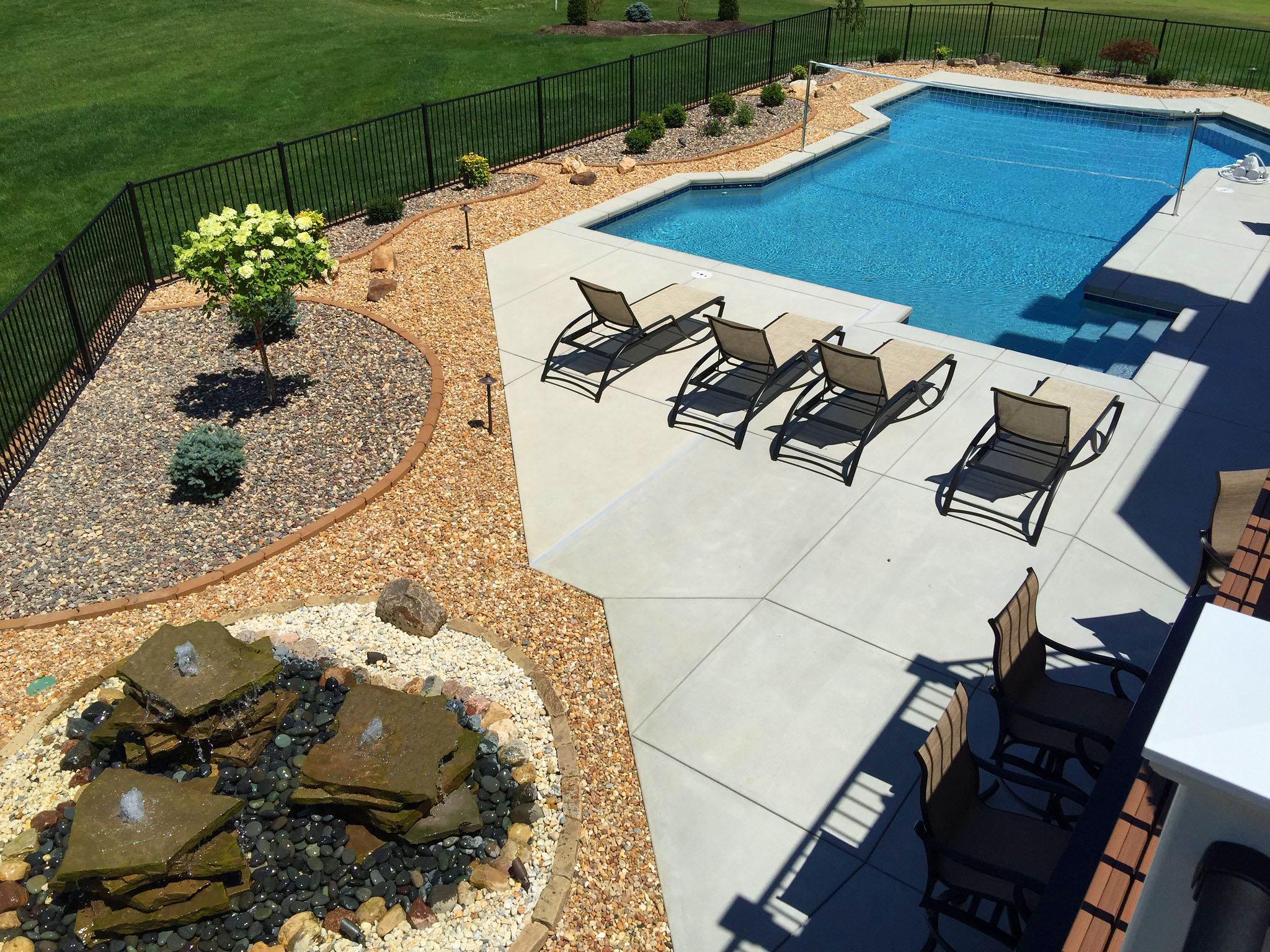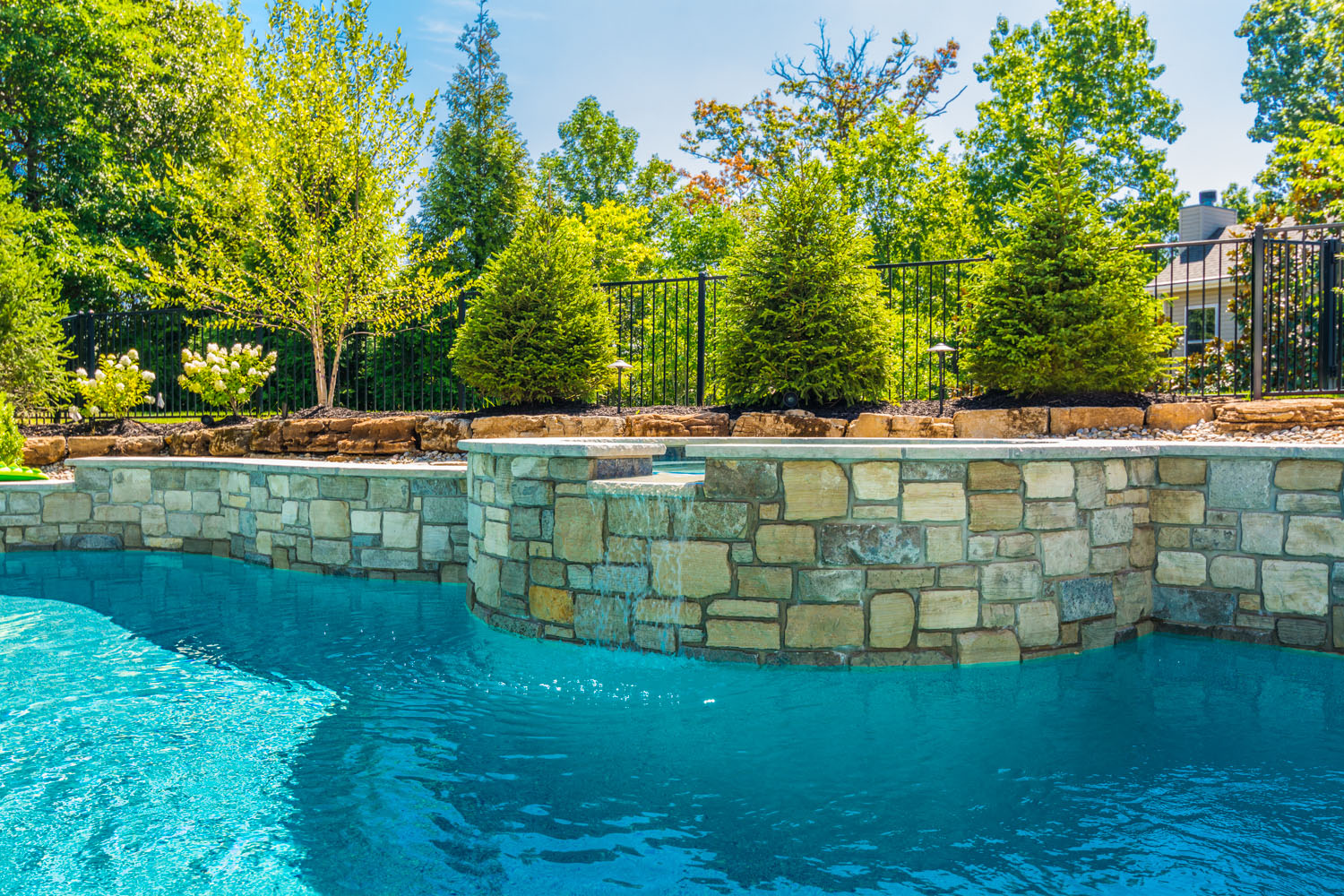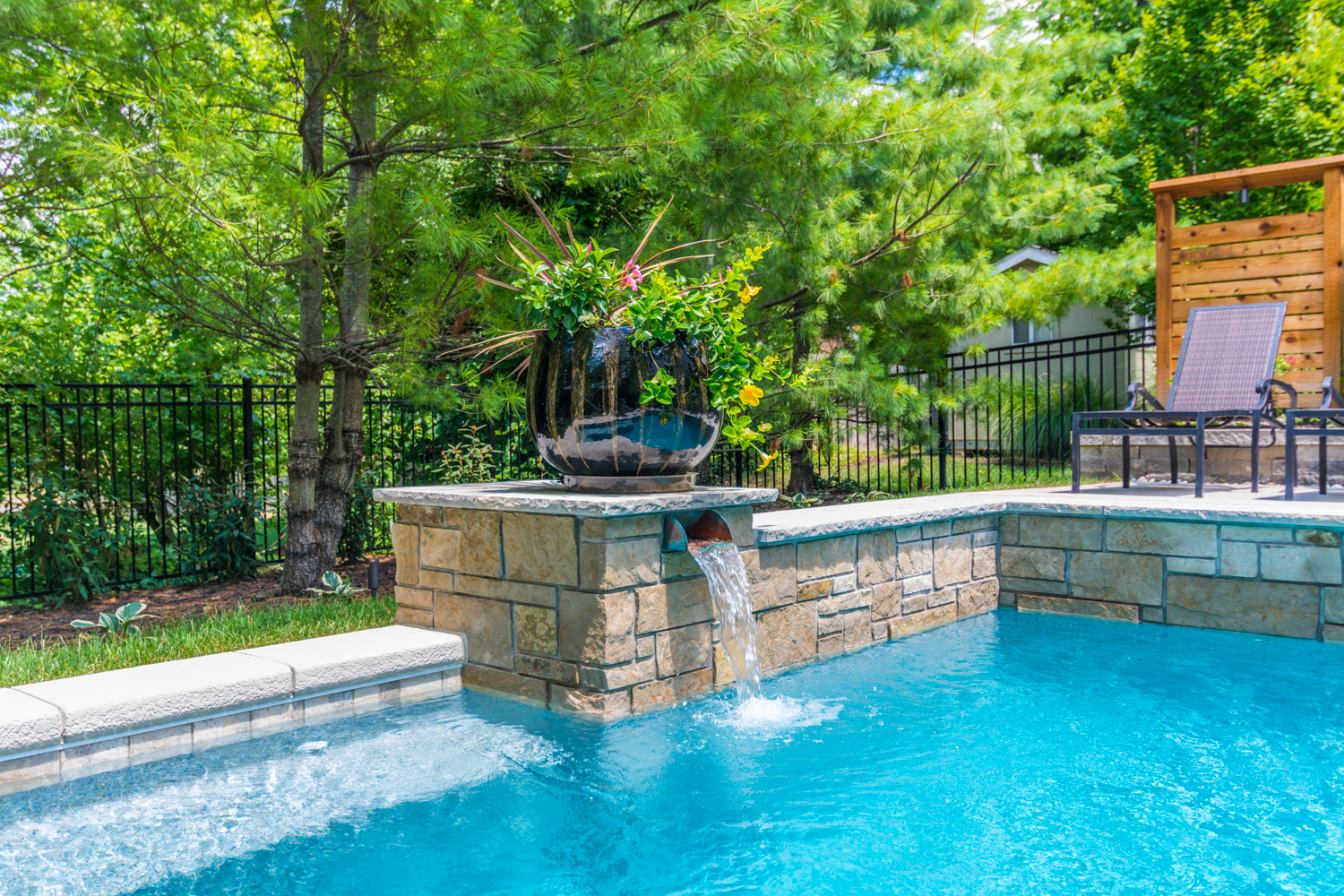
As a member of the Baker Pool Family of Companies, Flora Design & Landscape in St. Louis is exceptionally knowledgeable and experienced when it comes to landscaping around St. Louis swimming pools. Here are seven landscaping tips from our skilled designers to help minimize maintenance and maximize enjoyment of your pool area.
If possible, refrain from using mulch in planting beds in close proximity to the pool. Mulch can be displaced rather easily and, if used near the pool, will inevitably end up in the water. Save yourself the hassle by using decorative rock or gravel in its place. These materials are generally more expensive up front but, unlike mulch, don’t need to be replaced every season and require very little maintenance. Decorative gravels come in many different shapes, sizes and colors, so choose one that fits your style and complements your outdoor space.

Large plants and trees can be great for shade and privacy, but it’s best to avoid planting those with invasive roots near your St. Louis swimming pool. Over time, invasive root systems could potentially cause damage to your pool’s structure, plumbing and surrounding decking. Some plants with known invasive roots include elm, ficus and oak. Just remember, just because a plant starts out small doesn’t mean that it will stay that way!

When it comes to the area surrounding your St. Louis swimming pool, try to choose plants and trees that retain their leaves year-round. Deciduous trees that drop their leaves will require more upkeep, as the leaves will need to be routinely swept off the deck and cleaned out of the pool itself. Deciduous trees also produce more pollen that can clog your filters and make controlling your water chemistry much more challenging. Trust us, your service technician will thank you for sticking with evergreens. Plus as an added bonus, evergreens will provide more privacy for your pool area—it’s a win-win.
We’re all for supporting the bee-hummingbird-ecosystem, but nobody wants bees buzzing around them while they’re trying to enjoy a relaxing afternoon sunbathing next to the pool. Reserve plants that are known to attract pollinators such as clover, milkweed, wild hyacinth, cliff goldenrod and blue wild indigo for other areas of your yard and keep them away from the swimming pool.
When planning landscaping for your St. Louis pool area, keep in mind that bathing suits tend to leave a lot of skin exposed. For this reason, it is probably best to keep plants with thorns or stickers out of the pool area. After all, the last thing you want is for one of your children or guests to accidentally fall into a painful rose bush! Other prickly plants to avoid include barberry, pyracantha, blackberry bushes, cacti and spiny succulents.
Container gardening is all the rage right now, and your St. Louis swimming pool area is an ideal location for potted plants. Using large containers or pots allows you to combine different plant species and create visually interesting displays that include a variety of contrasting colors and textures. Just keep in mind that plants in poolside pots will require extra watering, as containers tend to dry out faster than planting beds. For this reason, it is a good idea to choose plants that are heat and drought tolerant.

When selecting plants for your pool area, and for really any landscaping project, it’s always best to choose plants that are native to the St. Louis region. Native plants are already well-adapted to local environmental conditions, and therefore require very little maintenance once they have been established. This is an undeniable benefit, as less upkeep means more free time to spend enjoying your pool.
Even so, some St. Louis homeowners prefer to plant exotic species around their pool area to create a more tropical feel. This of course can be done, but keep in mind that exotic plants necessitate much more attention than their native counterparts. For most tropical species, this typically includes transplanting each season and storing the plants in a climate-controlled environment.
Overall, it’s really just a matter of personal preference and whether the tropical ambiance that exotic species help to create is worth the added upkeep. The best advice we can give is do your research beforehand and know exactly what you’re getting yourself into.
Whether you have a brand-new swimming pool or an existing pool in need of some landscaping expertise, Flora can help. Fill out our online form or give us a call at (636)728-1520 to learn more about our services and to discover the possibilities for your backyard.